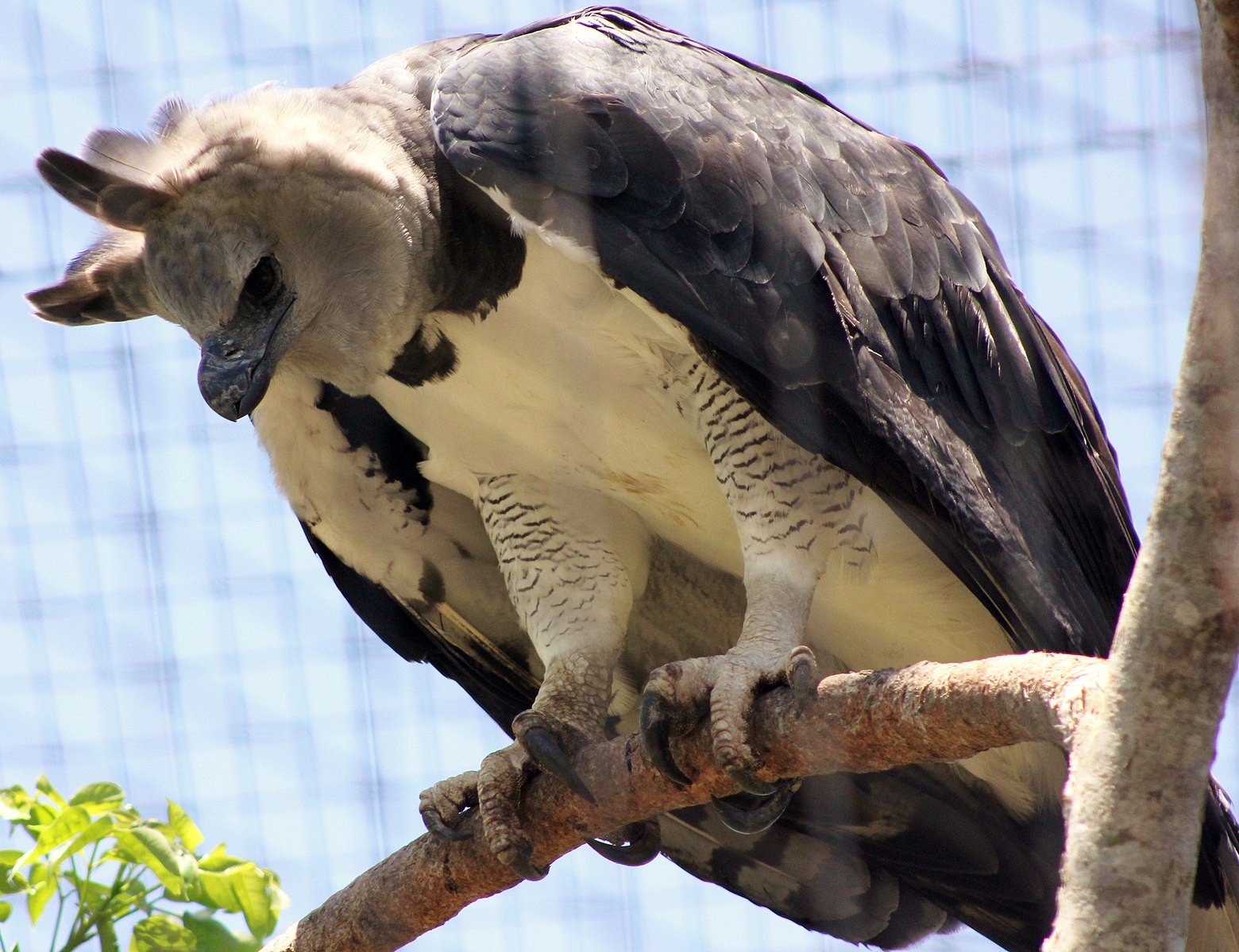The Harpy Eagle, one of the largest and most impressive birds of prey, is known for its formidable beak, which plays a crucial role in its hunting and feeding behaviors. This hooked and powerful beak, along with its other unique physical features, makes the Harpy Eagle a true apex predator in the rainforests of Central and South America.
The Harpy Eagle’s Beak: A Formidable Weapon
The Harpy Eagle’s beak is a key feature that sets it apart from other eagle species. This hooked and powerful beak is designed to tear through the tough skin and flesh of its prey, which can include medium-sized arboreal mammals such as sloths, monkeys, and even young deer. The beak is covered in a wax-like substance called a cere, which helps keep it moist and flexible, allowing the bird to maintain a strong grip on its prey.
The Importance of the Facial Disk
 Image source: Harpy Eagle by cuatrok77
Image source: Harpy Eagle by cuatrok77
Another important feature of the Harpy Eagle’s nose is its facial disk, a ring of feathers around the face that the bird can raise and lower at will. This facial disk helps the Harpy Eagle triangulate sound, making it easier for the bird to pinpoint and locate its prey, even in the dense rainforest habitat where it lives. This is particularly useful when the prey is hidden by vegetation, as the Harpy Eagle can use its keen senses to track it down.
The Harpy Eagle’s Powerful Feet and Talons
While the Harpy Eagle’s beak is a formidable weapon, its feet and talons are equally impressive. The bird’s hind toe talon can measure up to 10 cm (4 inches) in length, the same size as a Grizzly Bear’s claws. This powerful foot structure allows the Harpy Eagle to catch and carry prey that is significantly larger than itself, making it one of the most powerful birds of prey in the world.
The Harpy Eagle’s Size and Weight
In addition to its impressive beak and feet, the Harpy Eagle is also known for its large size and weight. With a wingspan of around 1.8 m (6 feet) and an average weight of 7.4 kg (16.3 pounds) for females, the Harpy Eagle is one of the bulkier eagle species around. This size and weight, combined with its powerful beak and talons, make the Harpy Eagle a formidable predator that plays a crucial role in maintaining the balance of its ecosystem.
The Harpy Eagle’s Hunting Behavior
The Harpy Eagle’s hunting behavior is closely tied to its physical features, including its beak and feet. The bird typically hunts from a perch, using its keen eyesight and hearing to locate its prey. Once it has spotted its target, the Harpy Eagle will swoop down and use its powerful beak and talons to capture and kill its prey, often carrying it back to its nest to feed its young.
The Harpy Eagle’s Conservation Status
Despite its impressive size and power, the Harpy Eagle is classified as Near Threatened by the International Union for Conservation of Nature (IUCN). This is due to a variety of threats, including habitat loss, hunting, and persecution by humans. Conservation efforts are underway to protect this majestic bird and ensure its continued survival in the wild.
In conclusion, the Harpy Eagle’s beak is a crucial part of its anatomy, allowing it to tear through the tough skin and flesh of its prey and triangulate sound to locate its targets. Combined with its powerful feet and talons, the Harpy Eagle’s beak makes it one of the most formidable birds of prey in the world, playing a vital role in the balance of its ecosystem. As we continue to learn more about this remarkable bird, it is important that we work to protect it and ensure its survival for generations to come.
References:
– Harpy Eagle – San Diego Zoo Wildlife Explorers
– Harpy Eagle – San Diego Zoo Animals & Plants
– Size of Harpy Eagle
– Harpy eagle – Wikipedia
– Harpy Eagle – A-Z Animals



